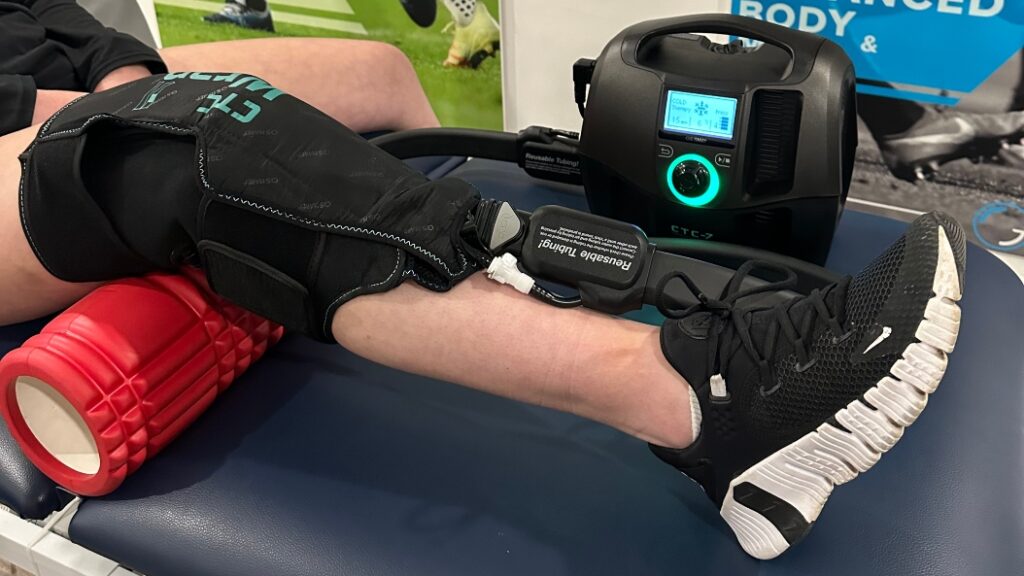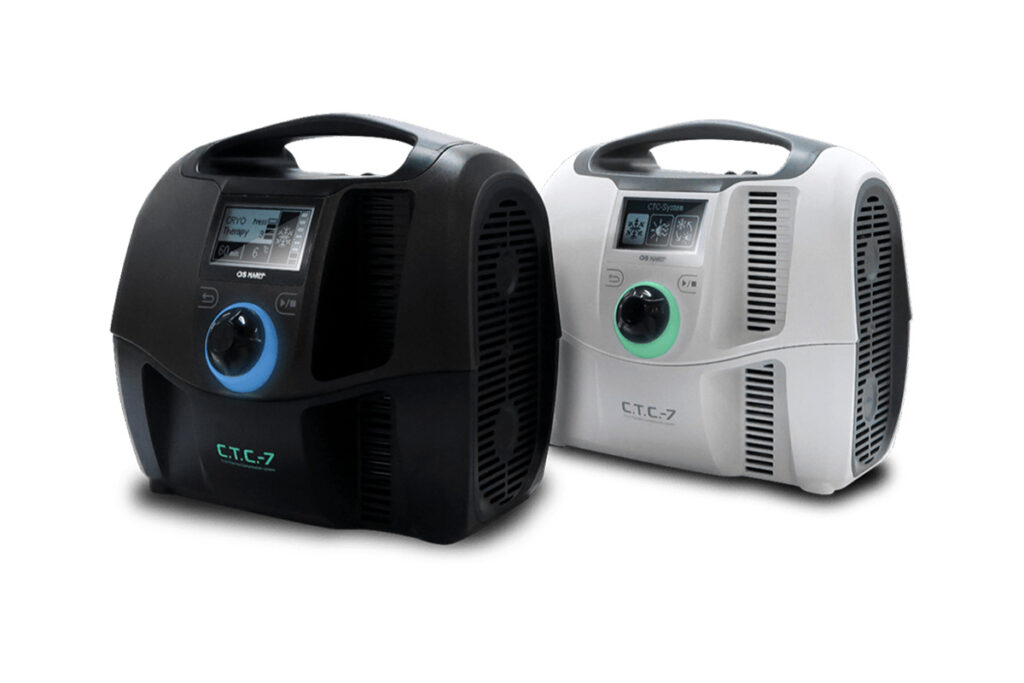Whether you’re a weekend warrior, a seasoned athlete, or are recovering from another form of injury, hot and cold therapy, sometimes called contrast therapy, can help. Applying heat and then cold to a given area can help speed up your recovery, getting you back on your feet and ready to perform sooner. In this blog post, we’re going to look at how hot and cold contrast therapy can help you.
Before we get into contrast therapy, we need to understand what the application of heat and/or cold can do for injury recovery.
Cold therapy works by introducing cold temperatures to the injured area which can help reduce pain and swelling. This could be as simple as an ice pack or a dedicated cryotherapy device that can deliver a range of cold temperatures. Imagine plunging your injury directly into a deep ice bath or a pile of snow… that’s the essence of cryotherapy. Temperatures ranging from 0°C down to -5°C are used to:
Thermotherapy is the opposite of cryotherapy and uses warm temperatures to promote healing and recovery. Thermotherapy usually uses heat between 38°C and 45°C and works by:


Contrast therapy is a combination of hot and cold therapy, often used in quick succession. By taking the benefits of both cryotherapy and thermotherapy and putting them into one treatment, the effects can complement each other.
So, how does contrast therapy work? It’s quite simple to do contrast therapy at home. You’ll need two baths of water, one of which is hot and the other is cold. For specific areas such as limbs, you can use a smaller container. You then alternate submerging the affected area in each one for a given period. Usually, the cold water should be around 5-15°C, and the warm water should be between 35-45°C. Aim to spend 1-2 minutes in the cold water, and 3-4 in the warm, for a total of around 20 minutes.
Of course, you may have seen professional athletes on Instagram take the process to the next level and use full-body warm/cold baths after training or competition. In this case, the timings remain roughly the same. It’s worth noting that this process is nothing new, the inhabitants of Scandinavian and alpine countries have long enjoyed a hot sauna, followed by a dip in a cold lake.
Knowing which therapy to use, and when, depends on your injury’s stage and nature. For example, acute injuries such as knocks and strains benefit most from cold therapy in the first 48 hours to reduce inflammation and pain. Chronic pain and stiffness, perhaps as a result of exercise, will benefit from thermotherapy and contrast therapy best. The increased blood flow will help you recover, increase mobility, and reduce your chances of aggravating the injury.
Adding compression therapy into the thermotherap mix can maximise the benefits of both. At a practical level, the compression helps to ensure a good contact between the skin and the hot or cold water. Additionally, compression can help reduce swelling and inflammation, so when combined with the positive effects of the cold therapy, it can lead to faster recovery. Finally, combing compression therapy with heat therapy can help increae blood flow to the affected area, helping the body’s natural recovery.


If you’re a keen athlete, are recovering from a serious injury, or are a medical professional, you should consider the CTC-7 device. We truly believe it’s a game-changer in injury recovery. This innovative device seamlessly integrates all three therapies (cryotherapy, thermotherapy, and contrast therapy) along with compression therapy, offering a one-stop solution for athletes and individuals on the mend.
The CTC-7 offers numerous advantages:
The CTC-7 boasts precise temperature control to tailor the therapy to your specific needs, within a range of 6°C to 45°C, and iceless cryotherapy and thermotherapy make using it with one of our dedicated wraps a breeze.
Choose pre-programmed settings or create personalised routines with customisable treatment protocols, while integrated compression therapy further enhances blood flow and reduces swelling.
To find out more about CTC-7, don’t hesitate to contact us and we’ll be happy to talk you through it.
We use cookies to help improve our services, make personal offers, and enhance your experience. If you do not accept cookies, some of our optional cookies may affect your experience.